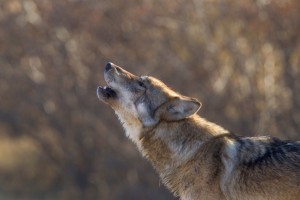Amazing Numbers that put all the Hunter hater groups claims out to pasture! a MUST READ!!

Cattle kills rare in wolf-occupied areas
By Ann McCreary
An ongoing, state-funded study of interactions between wolves and livestock shows that — no big surprise — wolves primarily eat deer, according to a researcher involved in field studies conducted over the past two summers.
The study is documenting, among other things, the types and numbers of animals killed and eaten by wolves, said Gabe Spence, a graduate student at Washington State University (WSU), which is leading the scientific investigation.
The goal of the $600,000 study, which was authorized and funded by the Washington Legislature, is to provide accurate data about wolf depredations on livestock and evaluate ways to prevent conflicts between livestock and wolves.
Spence discussed the research and preliminary findings during a presentation at the North Cascades Basecamp in Mazama last week.
The Methow Valley’s Lookout Pack is one of seven packs in north central and northeast Washington that have been studied during the past two years to develop a more accurate picture of the prey taken by wolves, Spence said. Researchers monitored four packs last year.
A team of WSU researchers conducted field studies during grazing seasons, from May through October, when cattle are turned out on public grazing allotments known to overlap with the territories of gray wolf packs.
Researchers placed radio and GPS devices on calves, cows and wolves to track their locations, determine where wolves and livestock occupy same area, and locate wolf kills to document what wolves are eating.
Over the past two years the researchers have documented 285 “probable wolf kills” by the packs they have studied. Four of the 285 animals killed by wolves were cattle, and involved three different packs.
No cattle were killed in 2014 by the packs being monitored, and none of the four cattle killed last year were in the Methow Valley, Spence said.
Spence said that about 940 cows and calves occupied the same territory as the wolf packs during the 2015 grazing season. That means that the four cattle killed equal .4 percent of the cattle in wolf-occupied areas.
“I don’t know if people realize how often wolves and cows are in the same place at the same time. All the time. Every day,” Spence said.
“Livestock deaths on the range are really small. Of the ones that die, only a tiny fraction are killed by predators, and of those a tiny fraction are killed by wolves,” Spence said.
The cattle kills account for 2.3 percent of the all the prey killed by wolves in 2015, Spence said.
Preliminary results show that over the past two summers deer accounted for almost half the prey killed by wolves. Researchers documented 137 deer that were among the probable wolf kills.
“Deer are by far the most common prey,” Spence said. The second-most common prey is moose, which account for about 22 to 28 percent of the animals killed by wolves.
By tracking wolf kills, researchers determined that the average kill rate for wolves in the Cascades area is about .3 kills per pack per day during the summer grazing season, Spence said.
That equals one kill every 3.3 days, or about 110 kills per year if the kill rate stays the same year round.
Even if kill rate is higher, for instance .5 kills per pack per day — to account for possible error or winter kill rates — it would add up to 183 kills per year, Spence said.
“To put this into perspective, roughly 350 deer are killed on the highway in the Methow Valley every year,” he said.
The study is expected to continue another two to three years and will likely include more packs, including the Methow Valley’s Loup Loup pack, if a collar can be placed on one of the wolves in that pack.
Researchers lost contact with a radio-collared female in the Lookout Pack last fall, and are not sure whether the collar failed or the wolf died or was killed. Spence said wildlife officials would try to capture and collar another Lookout pack wolf in spring or summer.
“Both packs overlap quite a bit with livestock,” Spence said.
One of the biggest challenges in conducting research into wolves and livestock “is how excited people get about this topic, on both sides. It makes it about the politics, not the biology,” Spence said.
“Having large predators on the landscape is really a social issue. The biology is pretty clear. It comes down to what we want for ourselves and our children,” Spence said.
Source: WSU study shows wolves’ favorite prey is deer — but moose are also on the menu | Methow Valley News
